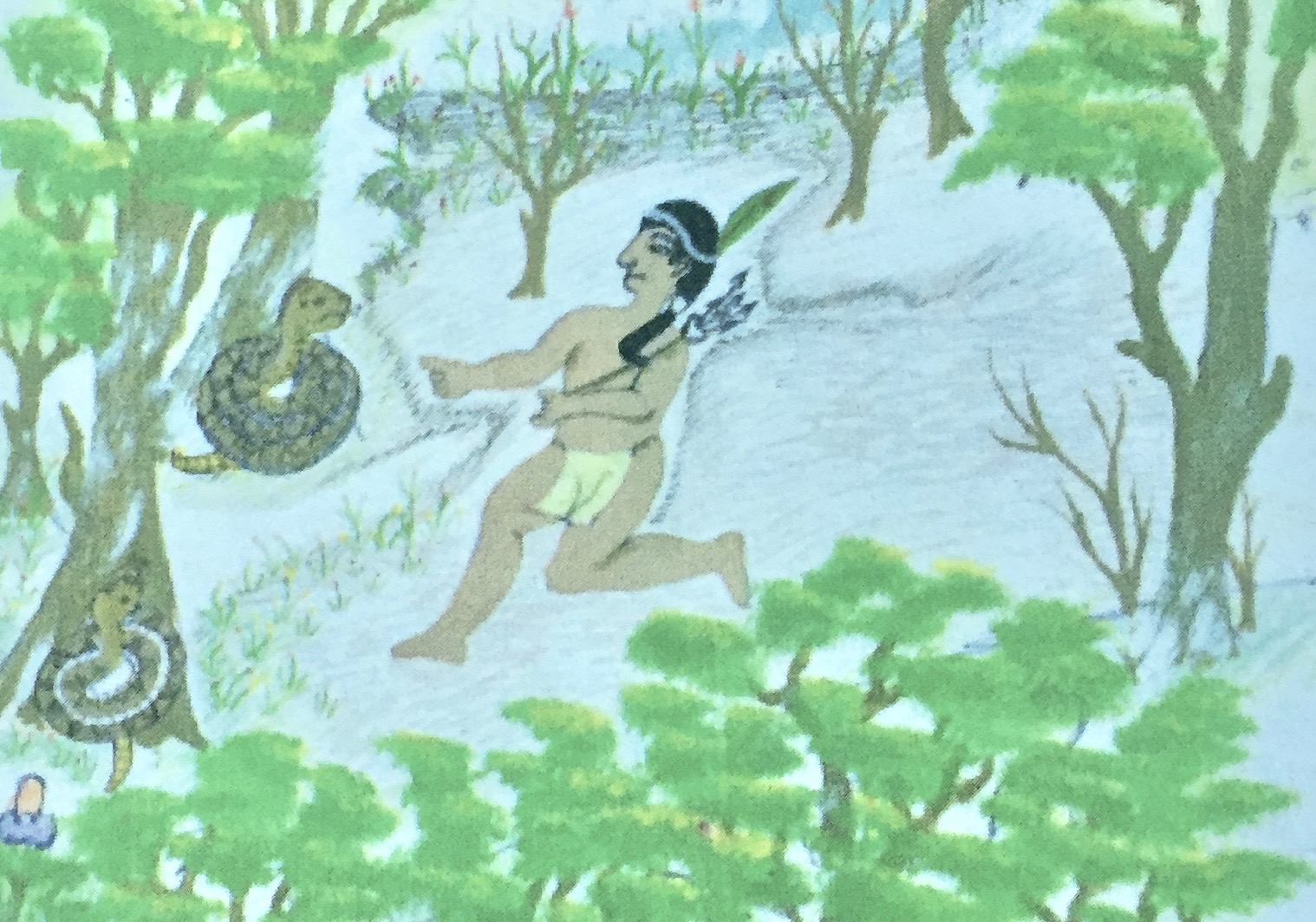
While learning about the Ngäbe-Buglé communities in Costa Rica, I would often hear myths and stories passed down in the community. In the territory of La Casona there was one that grabbed my attention, a story of a group of men hunting a sloth. Each time the sloth would climb a tree, the men would cut the tree, and the sloth would climb higher into the jungle. This struggle continued, but when the men were at the point of catching the sloth, the sloth extended its long claws, caught the stars, and pulled away from humankind. These claws of the sloth scratched the sky leaving long colorful marks that remained unhealed for months; a vision left in the imagination of the Ngäbe-Buglé. After the colors faded, the change marked the time that the Ngäbe-Buglé could begin the harvest, coinciding with the transition from winter to summer.
The story of the sloth is one that has been adapted through years of oral storytelling; many versions are told, but that of the sloth is one that children, living deep in the Panamanian jungle, can connect to their reality; everyone knows the long claws of the sloth.
This story of the sky changing colors is not a foreign one. Many native communities share the same story. Those working within the region explained to me that as the Ngäbe-Buglé trace their ancestry back generations, their population is believed to have crossed the Bering Strait thousands of years ago to enter into the Americas. The changing sky is a reference to the aurora borealis, called "Ciciro" in the language Ngäbere, leaving long colorful streaks in the sky.
This is an experience that people in the community no longer recall, but exists in the collective memory passed from generation to generation. The power of storytelling for the Ngäbe-Buglé has revived this former journey. The harvest, once symbolized by the power of the aurora, now is a recurring experience for the Ngäbe-Buglé, who build their lives around this cyclical activity.





